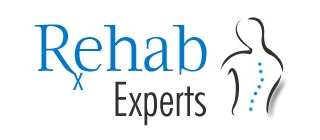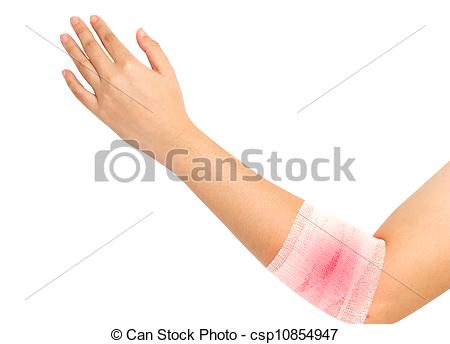Sprain or Strain
Some of our patients ask me about the difference between sprain and strain. Some thought that it is just the spelling but just the same thing.
Sprains and strains are among the most common injuries in sports. Although these two words are often used interchangeably, they are different types of injuries.
A sprainis an injury involving the stretching or tearing of a ligament (tissue that connects bone to bone) or a joint capsule, which help provide joint stability. A severely damaged ligament or joint capsule can cause instability in a joint. Symptoms may include pain, inflammation, and in some cases, the inability to move a limb (arm, leg, foot). Sprains occur when a joint is forced beyond its normal range of motion, such as turning or rolling your ankle.
Strainsare injuries that involve the stretching or tearing of a musculo-tendinous (muscle and tendon) structure. An acute (instant or recent) strain of the musculo-tendinous structure occurs at the junction where the muscle is becoming a tendon. These strains take place when a muscle is stretched and suddenly contracts, as with running or jumping. This type of injury is frequently seen in runners who strain their hamstrings. Many times the injury will occur suddenly while the runner is in full stride. Symptoms for an acute muscle strain may include pain, muscle spasm, loss of strength, and limited range of motion.
Chronic (long-lasting) strains are injuries that gradually build up from overuse or repetitive stress, resulting in tendinitis (inflammation of a tendon). For example, a tennis player may get tendinitis in his or her shoulder as the result of constant stress from repeated serves.
Causes of sprains and strains
Soft tissue is made from bundles of fibers. Muscle and tendons contain specialized cells that monitor the degree of contraction and stretch. With general use, muscles and tendons use soft contractions to resist overstretching. However, sudden twists or jolts can apply greater force than the tissue can tolerate. The fibers overstretch beyond their capacity and tear. Bleeding from broken blood vessels causes the swelling.
Injuries to soft tissues such as ligaments and tendons can come on suddenly or may get worse gradually. A sudden injury is related to a specific incident and is often called an acute soft tissue injury. This means it has occurred within the previous 24 to 72 hours. An injury that gets worse over time (for example, over three months) is often referred to as a chronic soft tissue injury. These are commonly caused by overuse or changes in normal tissue stress.
First Aid
For immediate self-care of a sprain or strain, try the R.I.C.E. approach — rest, ice, compression, elevation. In most cases beyond a minor strain or sprain, you’ll want your doctor and physical therapist to help you with this process:
- Rest. Avoid activities that cause pain or swelling, but don’t avoid all physical activity. If it hurts to bear weight on a sprained ankle, for example, you can peddle an exercise bicycle with one leg while resting the injured ankle on a footrest peg.
- Ice. Immediately place an ice pack on the injury. Keep the area iced for 15 to 20 minutes, and repeat several times a day for the first few days. Cold reduces pain, swelling and, possibly, bleeding. If the area turns white, stop treatment immediately. If you have vascular disease, diabetes or decreased sensation, talk with your doctor before applying ice.
- Compression. To help stop swelling, compress the area with an elastic bandage until the swelling stops. Don’t wrap the bandage too tightly or it may reduce circulation. Begin wrapping at the end farthest from your heart. Loosen the wrap if the pain increases, the area becomes numb or swelling is occurring below the wrapped area.
- Elevation. To reduce swelling, elevate the injured area above the level of your heart, especially at night. Gravity helps reduce swelling by draining excess fluid.
Over-the-counter pain medications such as ibuprofen (Advil, Motrin, others) and acetaminophen (Tylenol, others) also can be helpful.
After the first two days, gently begin to use the injured area. You should see a gradual, progressive improvement in the joint’s ability to support your weight or your ability to move without pain. Mild and moderate sprains usually heal in three to six weeks. Physical therapist can help you to maximize stability and strength of the injured joint or limb.
Treatment for sprains and strains
Most soft tissue injuries take a few weeks to heal, depending on the severity of the sprain or strain, and the general health of the person. It is important to get the correct treatment as soon after the injury as possible to help rapid recovery. See your physical therapist if you don’t have full function of the area, or if the pain and swelling don’t subside after a couple of days.
Treatment may include:
- Exercises, under the guidance of your physical therapist, to promote healing, strength and flexibility
- Manual techniques, such as mobilisation and massage
- Electrotherapy
- Pain-relieving medication (talk to your doctor or pharmacist before taking any medications, as they can sometimes disrupt the healing of soft tissue injuries)
- Gradually introducing activities to back to normal levels.
A short period of immobilisation may assist with the healing process for Grade II type injuries.
Severe injuries, where the tissue has completely ruptured, may need surgery to put the torn pieces back together. Surgically repaired grade III injuries will require significant treatment to regain strength and function. Whether you have surgery, or immobilisation and physical therapy as the treatment for a Grade III injury, medium to long-term success is similar for either treatment.
Your treating therapist, may seek the opinion of an orthopaedic surgeon if you have a significant soft tissue injury (grade III). In some cases, it may be more suitable to immobilise rather than have surgery. This decision should be made by you and your treating team.
Where to get help?
Rehab Experts provide physical therapy home service throughout Metro Manila that can help you regain your movement and strength.
Reference:
Ortho Info http://orthoinfo.aaos.org/topic.cfm?topic=A00111
Better Health Channel http://www.betterhealth.vic.gov.au/bhcv2/bhcarticles.nsf/pages/Sprains_and_strains
Hughston http://www.hughston.com/hha/a.strain-sprain.htm
Mayo Clinic http://www.mayoclinic.com/health/sprains-and-strains/DS00343/DSECTION=lifestyle-and-home-remedies

